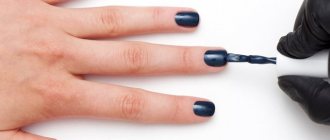Anatomy of the neck
To understand the causes and methods of eliminating a double chin, you need to study anatomy. Don't be afraid, there will be no blood, there will only be visual diagrams.
The soft tissues of the neck consist of 3 layers fused together:
- Leather;
- Subcutaneous fat layer;
- Muscles - platysma.
This is what the muscles look like:
Green muscles are platysma . Platysma consists of two petals. In the above example, you can clearly see the edges of the platysma in the photograph of a person:
How many people there are so many variants of platysma anatomy. For some, the platysma reaches the level of the orbicularis oculi muscles, for others it ends on the chin.
In the neck area there may be the following variations of platysma:
For some, the platysma immediately from the chin is divided into 2 petals, and for others, the petals are fused to each other at some distance.
Platysma consists of fibers - this can be seen in the illustrations above. Fiber density varies from person to person. The lower the fiber density, the thinner the platysma.
Between the two lobes of the platysma and deeper, behind the platysma, there is interplatysmal fat , which differs in structure from subcutaneous fat.
Age-related changes
Age-related changes in the neck are mainly associated with platysma
The structural features of the platysma are the cause of age-related changes in the neck area.
- A thin layer of subcutaneous fat visually ages the neck area when age-related changes affect the skin itself. A thicker layer of fat under the skin could smooth out folds and wrinkles.
- Platysma is not attached to the bones, so it keeps its shape due to its own elasticity and elasticity. As we age, body tissues naturally lose these qualities.
- The subcutaneous muscle of the neck is little involved in everyday life, due to which it hypotrophies and weakens faster than other muscles of the body.
- In 25% of people, platysma consists of separate thin muscle bundles, which is why it ages faster, loses elasticity and sag. In this case, exercises that train platysma will be a waste of time and will not affect the appearance of the neck in any way.
To maintain a blooming appearance and youth, you need to give the muscle the load it needs.
Why does a double chin form?
Platysma is in a relaxed state most of the time: it is practically not involved in facial expressions and chewing processes. Muscles that don't work, as you know, weaken and atrophy.
If you lift your head up, you will feel tension in the front of your neck - this is a tense platysma. It's an unusual feeling, right? Proof that platism rarely works.
With age, in addition to weakening of the platysma, there is a loss of skin elasticity - wrinkles appear. Then the edges of the platysma begin to sag, and a “turkey neck” appears:
If you do not monitor your diet, then the cells of subcutaneous and interplatysmal fat begin to grow. Under the influence of gravity, fat begins to sag. Weakened platysma and skin that has lost elasticity cannot support such a mass and stretches - a double chin is formed.
Let us recall the variants of the structure of platysma:
What do you think: in what case does a double chin appear later?
It’s true, in the latter case (on the right), the prognosis is better - platysma in this version does not form a “turkey neck” and is able to retain more adipose tissue without stretching.
The shape of the facial skeleton also affects the timing of the appearance of a double chin: underdevelopment of the lower jaw leads to premature weakening of the platysma.
In total, how a double chin is formed:
- Platysma weakens, the skin loses elasticity;
- A “turkey neck” appears;
- Growing fat cells stretch and fill sagging skin;
- A double chin is formed.
The structural features of the platysma and lower jaw greatly influence the timing of the formation of a double chin.
Effect of age
The cervical area in cosmetology is considered one of the most vulnerable areas. Folds and wrinkles often form here, and the skin takes on a dry and old appearance. Such changes occur due to structural features:
- thin fat layer (promotes rapid dehydration);
- lack of tension and attachment to bone structures;
- in many people, a thin layer of tissue produces several separate bundles, which leads to a violation of the integrity of the structure (such features do not allow keeping the subcutaneous muscle in good shape);
- the absence of small vessels leads to slow blood circulation;
- insignificant mobility contributes to atrophy.
As a result of growing up, the skin and muscle layer sag and stretch. A “turkey neck” appears. Excess fat in this area is distributed unevenly. The most vulnerable area is the angle between the neck and chin. Obesity leads to the appearance of a double chin. Therefore, it is very difficult to maintain the beauty of the neckline as you age. To maintain tone, it is recommended to eat properly, excluding obesity, and exercise to improve blood circulation, nutrition and tone of muscle tissue.
Here's something else interesting
— Subscribe to my Instagram. I lead it myself, without assistants. So you will get to know me better, look at my works and reviews, and make the right choice.
